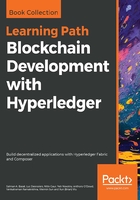
上QQ阅读APP看书,第一时间看更新
Additional capabilities to consider
What else should be included in enterprise blockchain proposals? Here is a non-exhaustive list of other capabilities to consider:
- Auditing and logging: Including auditing and logging in a blockchain solution can help with addressing regulations for the purposes of non-repudiation, technology root cause analysis, fraud analysis, and other enterprise needs.
- Enterprise integration: It's also worth considering how the solution will be integrated into the enterprise:
- Integration with the incumbent Systems of Record (SoR): The goal here is to ensure that the blockchain solution supports your existing systems such as CRM, business intelligence, reporting and analytics, and so forth
- Integration as a transaction processing system: If you want to preserve the system of record as an interim approach to adopting blockchain, integrating it as a transaction processing system makes sense
- Design with the intent to include blockchain: The path of least disruption to your existing systems will accelerate enterprise adoption of blockchain
- Monitoring: Monitoring is an important capability for addressing regulations and ensuring high availability, capacity planning, pattern recognition, and fault identification.
- Reporting and regulatory requirements: Being prepared to address regulatory issues is also very important, even for interim adoption of a blockchain as a transaction processing system. It's recommended that you make connectors to your existing SoR to offload reporting and regulatory requirements until blockchain is enterprise-aware, or the enterprise software is blockchain-aware.
- Enterprise authentication, authorization, and accounting requirements: In a permissioned enterprise world (unlike permissionless bitcoin blockchains), all blockchain network participants should be identified and tracked. Their roles need to be defined if they are to play a part in the ecosystem.